Research | Events | Policy | People | Funding | Awards | Business | Trend watch
RESEARCH
Quantum chips Google aims to build its own quantum-computer chips, through a hardware initiative announced on 2 September. The firm, based in Mountain View, California, has partnered on the project with a quantum-computing group at the University of California, Santa Barbara, led by John Martinis. Alongside its own effort, Google says that it will continue to work with computer firm D-Wave in Burnaby, Canada, which sold what was claimed to be the second ever commercial quantum computer to a Google-led collaboration in May 2013 (see Nature http://doi.org/mt2; 2014).
Geckos die in space All five geckos involved in a Russian space-agency sex experiment have died. The animals were launched into orbit in July so that researchers could study the effects of microgravity on animal mating habits. Researchers had feared that the geckos were lost when the spacecraft the animals were in briefly lost communication with ground control (see go.nature.com/iqrbks). The Foton-M4 craft landed safely last week, and although a group of fruit flies had survived, the geckos had perished, the agency says.
EVENTS
South America yields titanosaur bones Palaeontologists have identified a new species of dinosaur from bones uncovered in southwestern Patagonia, Argentina. Called Dreadnoughtus schrani, the animal belongs to a subgroup of sauropods — large, long-necked, herbivores. Kenneth Lacovara (pictured) at Drexel University in Philadelphia, Pennsylvania, led the study, published on 4 September, that excavated two relatively complete specimens of different sizes (K. J. Lacovara et al. Sci. Rep. 4, 6196; 2014). The bones were buried in rocks formed from flood-plain sediments laid down between 66 million years and 84 million years ago. Analysis suggests that the dinosaur stretched about 26 metres from snout to tail. The larger of the specimens, which may not have been fully grown, is estimated to have weighed nearly 60 tonnes. See go.nature.com/7globi for more.
Ebola strategy The Ebola outbreak in West Africa has claimed more than 2,000 lives, the World Health Organization (WHO) estimated on 5 September, and has potentially infected almost 4,000 people. A wave of cases in Nigeria was traced to an infected traveller in July, and is feared to have spread widely through a doctor who became infected. WHO advisers decided last week that the best experimental treatment to use is a blood transfusion from survivors of the disease. See go.nature.com/m55ual for more.
Ricin left behind A laboratory sweep at the US National Institutes of Health uncovered forgotten stores of the toxin ricin and four pathogens, according to an agency memo released on 5 September. The agency performed the search after finding improperly stored vials of the deadly smallpox virus in a refrigerator at its campus in Bethesda, Maryland, in July. See go.nature.com/eyyylw for more.
Greenhouse gases Atmospheric greenhouse-gas levels reached a record high in 2013, the World Meteorological Organization in Geneva, Switzerland, reported on 9 September. The global carbon dioxide concentration hit 396 parts per million (p.p.m.) — a 2.9 p.p.m. increase from 2012, and the largest annual rise since 1984. At that rate, the global CO2 concentration is set to exceed the symbolic 400 p.p.m. threshold in 2015 or 2016 (see Nature 497, 13–14; 2013).
POLICY
Animal-studies poll Nearly one in four people believes that the British government should ban all animal research, according to a survey published by the UK Department for Business, Innovation & Skills on 4 September. However, more than two-thirds of the 969 adults surveyed said that it is acceptable “so long as it is for medical research purposes and there is no alternative”. Only one-fifth of participants felt that organizations that conduct animal research are well-regulated; the most common perception — reported by 44% of people — was that such organizations are “secretive”.
Gender equality Europe has seen a large increase in the number of nations with quotas or targets for gender equality in public-research leadership positions — from 8 countries in 2008 to 18 in 2013 — according to a European Commission report released on 3 September. The survey of 31 countries found, however, only a slight increase — from 12 to 15 in the same period — in the number of countries whose research institutions had implemented broader gender-equality plans.
Uranium for India India signed a nuclear-cooperation deal on 5 September to buy uranium for power generation from Australia — the first nation to buy Australian uranium without having signed the international nuclear non-proliferation treaty. Australia also agreed to increase sales of conventional fuels to India, such as coal and natural gas. About one-quarter of India’s population of 1.2 billion lacks access to electricity, according to the World Bank.
Aircraft emissions The US Environmental Protection Agency (EPA) will formally consider whether carbon dioxide produced by aviation poses a threat to human health — the first step towards developing regulations that could restrict aircraft CO2 emissions. In a 4 September filing to the International Civil Aviation Organization, the EPA said that it will release its findings by 2015, and finalize them in 2016. The agency already limits CO2 from automobiles and some power plants.
Clean-coal permits The US Environmental Protection Agency announced on 2 September that it had approved permits for the FutureGen programme to inject carbon dioxide deep underground — a key step in the carbon capture and sequestration demonstration project, which has started and stalled several times since 2003 (see Nature 459, 901; 2009). The project involves capturing CO2 from a retrofitted, coal-fired power plant in Meredosia, Illinois, and injecting it underground through a series of wells. The permits would allow well-drilling to begin next month.

GMTO
PEOPLE
Telescope leader Physicist Edward Moses (pictured) has been chosen to lead the Giant Magellan Telescope project, the international collaboration announced on 3 September. Scheduled for completion early next decade, the 25-metre telescope in the Chilean Andes will be used to study the formation of stars and galaxies in the early Universe, among other aspects of deep space. Moses formerly served as principal associate director of the Lawrence Livermore National Laboratory in California.
FUNDING
Keeling curve cash The iconic ‘Keeling curve’, a 56-year-old record of rising atmospheric carbon dioxide levels at Mauna Loa in Hawaii, has won a five-year, US$500,000 grant from US philanthropists Wendy and Eric Schmidt, announced on 3 September. The CO2-monitoring project, which is maintained by geochemist Ralph Keeling at the Scripps Institution of Oceanography in La Jolla, California, has been threatened by recent funding cutbacks at US government science agencies. See go.nature.com/19a3hv for more.
AWARDS
Lasker awards Kazutoshi Mori of Kyoto University in Japan and Peter Walter of the University of California, San Francisco, have won this year’s Albert Lasker Basic Medical Research Award. The prize recognizes their work on how cells correct proteins that are improperly folded. Geneticist Mary-Claire King at the University of Washington in Seattle won a special achievement award for her work on the BRCA1 gene, which is linked to breast cancer (see go.nature.com/f9miaa for more). Winners of the awards, announced this year on 8 September, often go on to get a Nobel prize.
BUSINESS
Melanoma drug On 4 September, US regulators issued their first approval of a drug that helps the immune system to fight cancer by blocking a protein called PD-1 (see Nature 508, 24–26; 2014). The drug, Keytruda (pembrolizumab), made by Merck of Whitehouse Station, New Jersey, was granted accelerated approval by the US Food and Drug Administration for patients with advanced melanoma that does not respond to other treatments. Merck plans to charge about US$12,500 for a month’s supply of Keytruda.
Gene-patent debate On 5 September, an Australian federal court dismissed a lawsuit challenging a patent on the gene BRCA1. The patent, held by Myriad Genetics of Salt Lake City, Utah, protects genetic tests for BRCA1 mutations associated with certain cancers. The decision, which contrasts with that on a US case last year, will fuel the debate about whether naturally occurring genes can be patented. See go.nature.com/ewc9zn and page 143 for more.
TREND WATCH
Ending an intense five-state competition, electric-car company Tesla Motors announced on 4 September that it had chosen Reno, Nevada, as the site of a US$5-billion battery ‘gigafactory’. Tesla, headquartered in Palo Alto, California, will partner with Japanese battery-maker Panasonic in the endeavour. Tesla, which already dominates the electric-vehicle-battery market (see chart), says that it hopes to cut the costs of battery packs by 30% and to sell 500,000 electric vehicles by 2020.
- Journal name:
- Nature
- Volume:
- 513,
- Pages:
- 148–149
- Date published:
- ()
- DOI:
- doi:10.1038/513148a





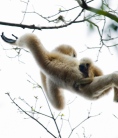

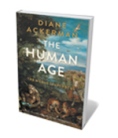
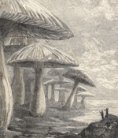








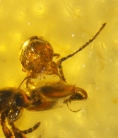
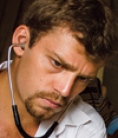



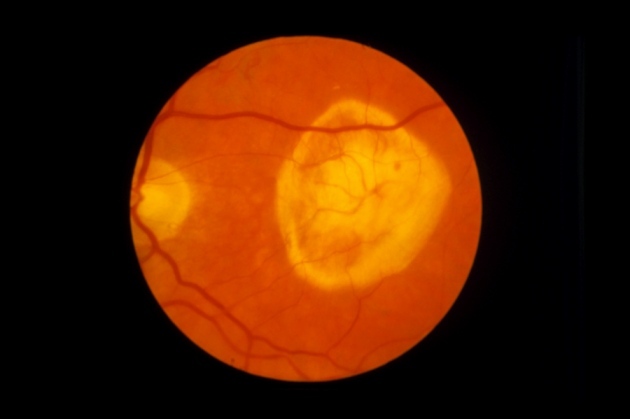
Social Media Box - AML